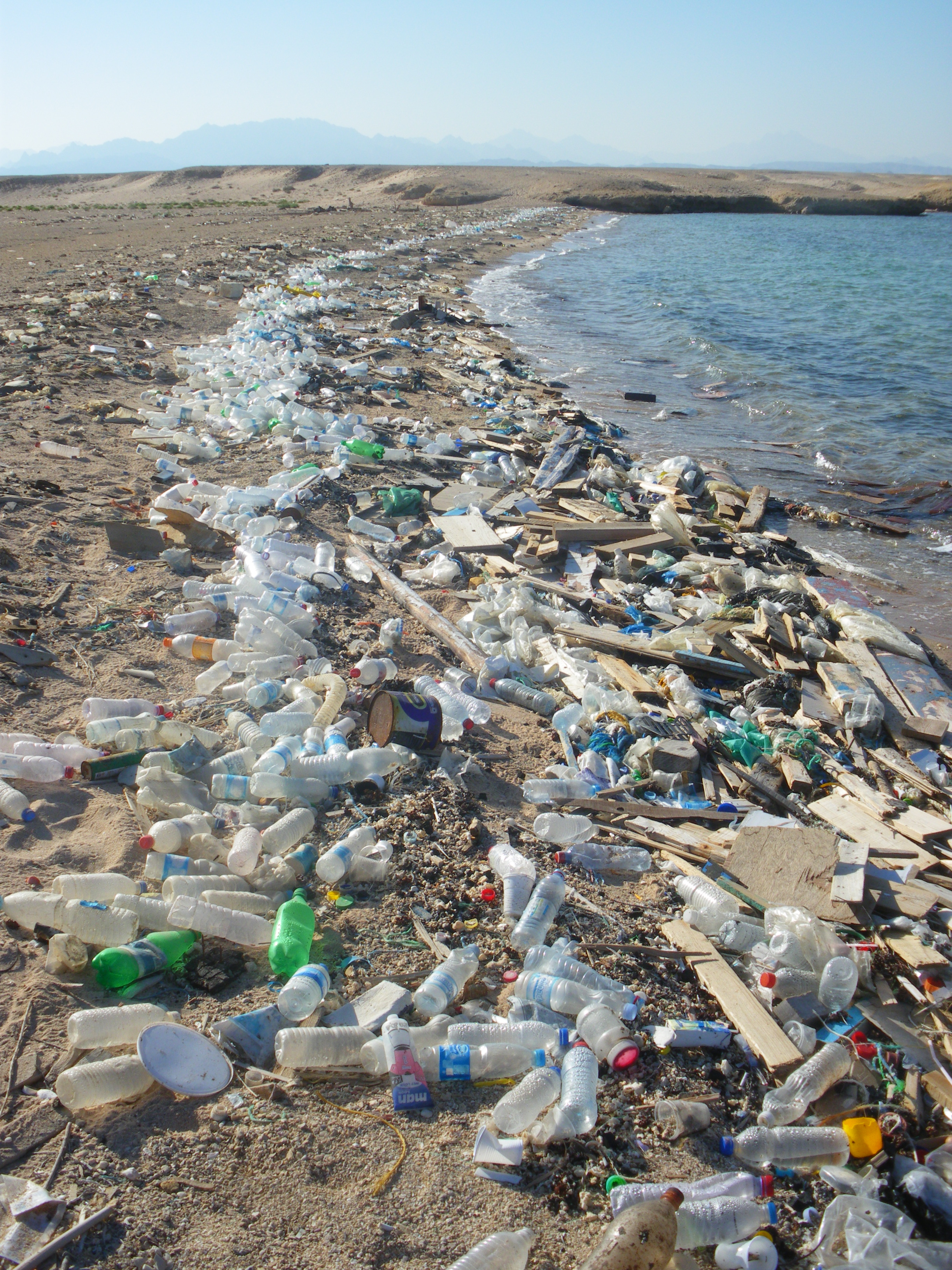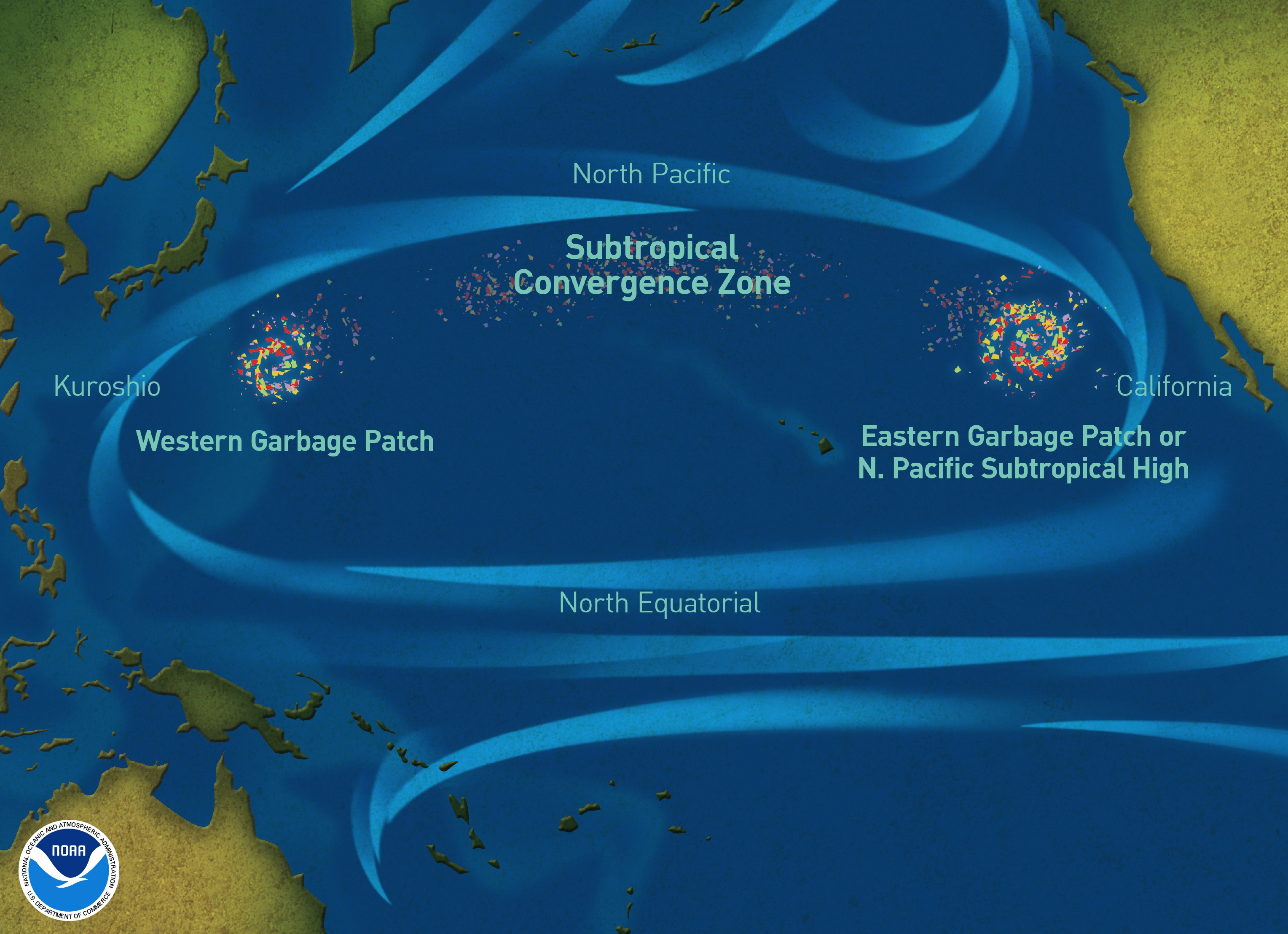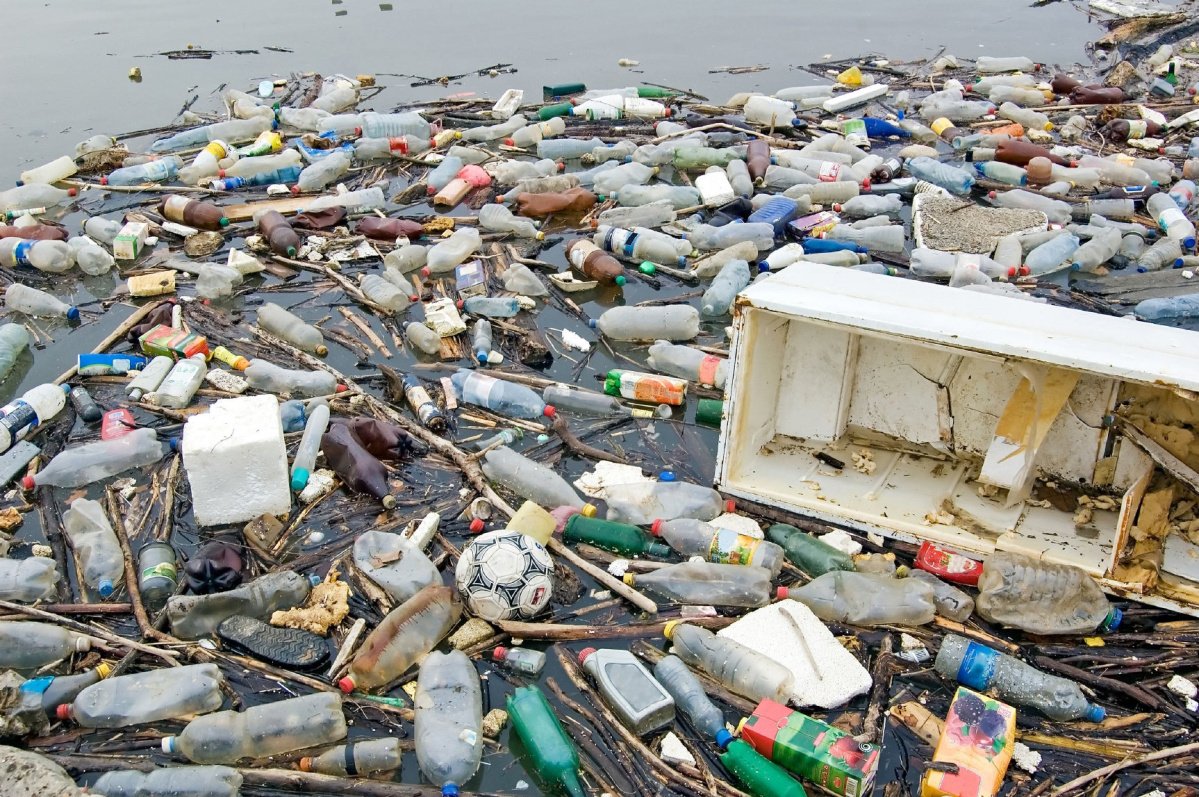Some of these long-lasting plastics end up in the stomachs of marine birds and animals, and their young, including sea turtles and the Black-footed Albatross. Midway Atoll receives substantial amounts of marine debris from the patch. Of the 1.5 million Laysan Albatrosses that inhabit Midway, nearly all are found to have plastic in their digestive system. Approximately one-third of their chicks die, and many of those deaths are due to being fed plastic from their parents. Twenty tons of plastic debris washes up on Midway every year with five tons of that debris being fed to Albatross chicks.
Besides the particles' danger to wildlife, on the microscopic level the floating debris can absorb organic pollutants from seawater, including PCBs, DDT, and PAHs. Aside from toxic effects, when ingested, some of these are mistaken by the endocrine system as estradiol, causing hormone disruption in the affected animal. These toxin-containing plastic pieces are also eaten by jellyfish, which are then eaten by larger fish.
Many of these fish are then consumed by humans, resulting in their ingestion of toxic chemicals. Marine plastics also facilitate the spread of invasive species that attach to floating plastic in one region and drift long distances to colonize other ecosystems.
On the macroscopic level, the physical size of the plastic kills fish, birds and turtles as the animals' digestion cannot break down the plastic that is taking up space inside their stomachs. A second effect of the macroscopic plastic is to make it much more difficult for animals to detect their normal sources of food. While eating their normal source of food plastic ingestion can be unavoidable. Research has shown that this plastic marine debris affects at least 267 species worldwide and a few of the 267 species reside in the North Pacific Gyre.


